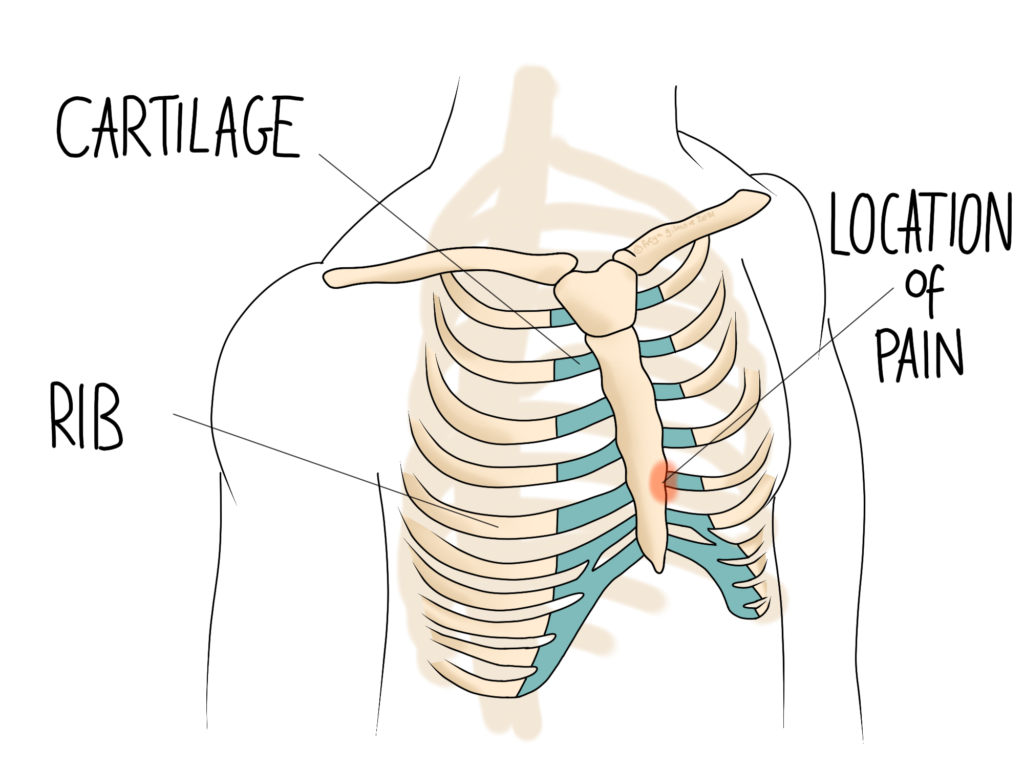Chest pain is a red flag, and must be screened for cardiovascular causes first. When we know you’re safe to treat, we might find that the cause of your pain is the joint between a rib and the sternum (breast bone).

Costochondritis
Costochondritis is a temporary condition that causes inflammation where the ribs join the sternum. It’s a relatively common cause of chest pain, and may account for almost a third of cases of chest pain in A&E. Symptoms can be unpredictable, coming and going without an obvious reason. Commonly, they are aggravated by sudden deep breaths or coughing and sneezing. The pain can be reproduced by pressing on the affected area of cartilage.
Symptoms vary widely from person to person. Some people find that their pain is sharp, while others would describe it as dull. The progression is highly variable too- some cases resolve on their own, whereas others take a long time. Symptoms can also return spontaneously too. Despite all of this, the condition is considered to be self-limiting.
A similar inflammatory condition is Tietze’s Syndrome- symptoms are similar but there may also be swelling over the ribs. However this is much less common than Costochondritis.
Slipping Rib Syndrome
This condition affects the lower ribs that do not attach directly to the sternum. These more mobile ribs can “curl under” and cause discomfort by pressing on a nerve. Sudden movement, especially leaning forwards or sideways quickly, might irritate the area. The diagnosis can be tested with a quick and easy test in the clinic. If pain or clicking are reproduced, it suggests that Slipping Rib Syndrome may be the cause.
Both costochondritis and Slipping Rib Syndrome affect women more than men. They can both occur in people of all ages, with the latter more likely among the middle aged population.
Some cases resolve on their own, and some might come and go for years. Cases that are unresponsive to treatment or especially painful will be referred back to the GP for further investigation.
Osteopathy for Rib Pain
We look at the body as a whole to get to the root of the problem. The ribs attach at the front of the chest, but they also articulate with the bones of the spine. If there is irritation at one end of the bone, we will want to check what’s happening at the other end too. Beyond this, we may find areas that move more or less than they should nearby. Addressing these areas may help to provide more comprehensive relief.
Sometimes good self-management advice is one of the best strategies. Inflammation can often be reduced with a cool compress; your osteopath can tell you if this is appropriate for you, and if so how long and frequently to apply it. Both costochondritis and Slipping Rib Syndrome may be further aggravated by some movements. We can work with you to identify these and find alternative ways to move until your symptoms are under control. We will also provide you with exercises specific to your case.

